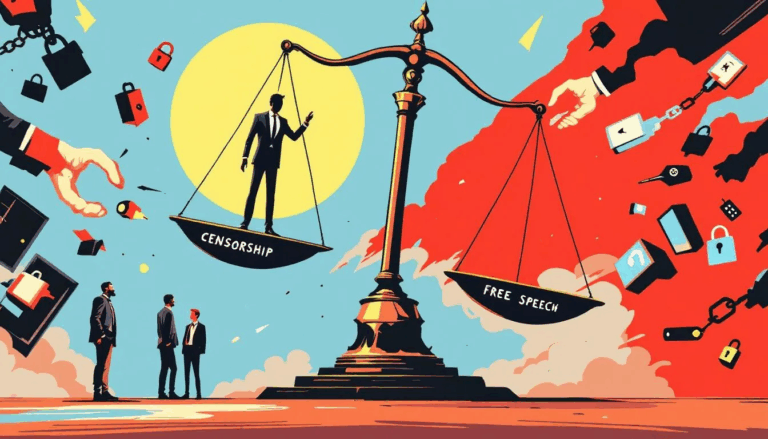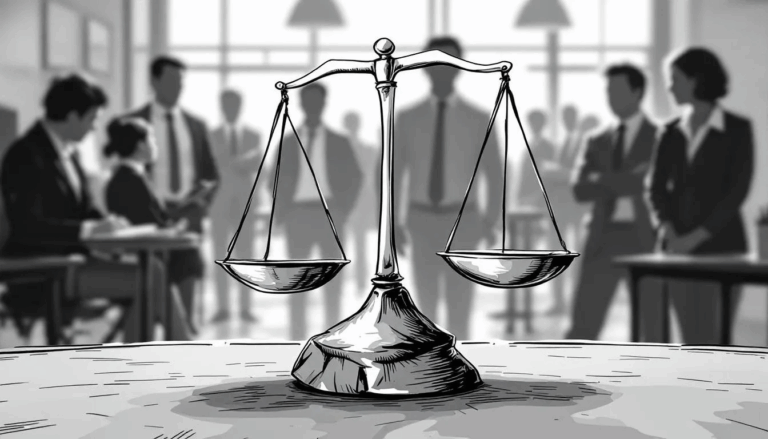EEOC investigators are essential for resolving workplace discrimination complaints. They collect evidence, interview witnesses, and determine if the law has been violated. This article will outline their qualifications, responsibilities, and the investigation process, including how the EEOC investigates workplace discrimination through the formal EEOC process.
Key Takeaways
- EEOC Investigators play a vital role in evaluating discrimination complaints, using their analytical and communication skills to ensure fair investigations.
- The investigation process includes collecting evidence, conducting witness interviews, and analyzing documentation, all while maintaining impartiality and transparency.
- Outcomes of investigations can lead to mediation or litigation, depending on whether evidence supports the claims of discrimination.
Introduction to the Equal Employment Opportunity Commission
The Equal Employment Opportunity Commission (EEOC) is the federal agency dedicated to enforcing federal anti-discrimination laws in the workplace. As the primary agency responsible for investigating claims of workplace discrimination, the EEOC works to ensure that all employees have access to equal employment opportunity, regardless of their background. The agency’s mission is to create workplaces where discrimination based on race, color, religion, sex, national origin, age, disability, or genetic information is not tolerated.
By investigating complaints and promoting compliance with equal employment opportunity laws, the EEOC helps protect employees from unfair treatment and fosters a culture of respect and inclusion. Whether you are an employee facing workplace discrimination or an employer seeking to understand your responsibilities, the EEOC serves as a vital resource in upholding the principles of fairness and equality in the workplace. Click hear to learn more about the EEOC process that can involve mediation or conciliation.
Who Are EEOC Investigators?

EEOC Investigators are the unsung heroes of workplace equality. These professionals can be equipped with a bachelor’s degree in fields such as human resources, law, or social sciences. Their role is crucial in fostering a fair workplace and safeguarding employee rights. However, qualifications alone aren’t enough; the skills they bring to the table are equally important. EEOC Investigators must possess strong analytical and communication skills to evaluate complex cases and convey their findings clearly. Impartiality is their compass, guiding them through the intricate maze of workplace investigations.
The job of an EEOC Investigator is not for the faint-hearted. It requires a delicate balance of empathy and objectivity, ensuring that every complaint is taken seriously and every detail meticulously documented. Their work involves evaluating evidence, interviewing involved parties, and deciding the validity of discrimination complaints.
This meticulous approach helps ensure that investigations are both thorough and fair, ultimately contributing to a workplace where equal employment opportunity and race color religion sex and sexual orientation is more than just a buzzword, prompting appropriate action when necessary. The equal employment opportunity commission plays a vital role in this process. EEOC Investigators may also investigate complaints involving employment agencies to ensure these agencies comply with anti-discrimination laws.
Key Responsibilities of EEOC Investigators
EEOC Investigators wear many hats, each one essential to the investigative process. At the heart of their responsibilities is the evaluation of evidence. This can range from scrutinizing documents to interview employees and witnesses. These interviews are not just casual conversations; they are structured to gather additional perspectives and either corroborate or challenge the claims made. Through these interactions, investigators aim to piece together a comprehensive picture of the alleged discrimination.
The process of collecting evidence is meticulous. Investigators gather documents, witness statements, and any other relevant information that can shed light on the allegations. This evidence is then systematically analyzed to determine whether the complaint holds water. Investigators focus on collecting and reviewing relevant evidence that directly addresses the allegations, as this is crucial for clarifying the facts and ensuring a fair outcome. Every piece of evidence, no matter how small, plays a crucial role in building or debunking a case of workplace discrimination. This thorough approach ensures that the EEOC can conduct effective investigations, maintaining the integrity of the process.
Another critical responsibility is documenting every detail of the reported issue. This documentation is not only important for the current investigation but also serves as a record that can be referenced in future cases. The goal is to maintain transparency and accountability throughout the process. Meticulous documentation by EEOC Investigators ensures that their findings are grounded in solid evidence and sound reasoning.
EEOC Investigative Authority
The EEOC’s authority to investigate workplace discrimination is grounded in several key federal laws, including Title VII of the Civil Rights Act, the Equal Pay Act, the Age Discrimination in Employment Act, the Americans with Disabilities Act, and the Genetic Information Nondiscrimination Act. When a charge of discrimination is filed, the EEOC reviews the allegations to determine if further investigation is warranted. This investigative process is designed to uncover whether discrimination occurred and if there is reasonable cause to believe a violation of the law has taken place.
If the EEOC determines that reasonable cause exists, the agency will attempt to resolve the charge through mediation or other voluntary resolution methods. This approach not only addresses the specific complaint but also encourages employers to take corrective action and prevent future incidents. The EEOC’s investigative authority ensures that all claims of workplace discrimination are thoroughly examined and that employees’ rights are protected under the law.
The Investigation Process Led by EEOC Investigators

The investigation process led by EEOC Investigators is a structured journey designed to uncover the truth. It begins with a formal charge of discrimination and follows a series of well-defined steps to ensure fairness and compliance with federal laws. Employees can initiate this process by filing a charge in person at an EEOC office, which serves as a starting point for the investigation. The process is thorough. It includes collecting information, interviewing witnesses, and reviewing workplace practices and policies. This structured approach ensures that every investigation adheres to legal standards and provides a fair assessment of the allegations.
The EEOC aims to resolve investigations within 180 days, although the complexity of cases and other factors can sometimes extend this timeline. The process is designed to be non-adversarial, meaning that investigators collect evidence impartially, giving everyone involved a fair chance to present their side of the story. This balanced approach is crucial for maintaining the integrity of the investigation and ensuring that any conclusions drawn are based on solid evidence.
The following subsections detail each stage of the investigation process. Each step, from initiating the investigation to conducting witness interviews and analyzing evidence, is critical. These steps offer valuable insights into how the EEOC upholds the principles of equal employment opportunity.
Initiating the Investigation
The journey of an EEOC investigation begins with the following steps:
- An employee files a charge of discrimination with the EEOC. This charge filing is the starting point, setting the wheels of the investigation in motion, including any potential discrimination claim. Discrimination occurred during this process can lead to further scrutiny.
- Within ten days of receiving the charge, the EEOC informs the employer about the allegations against them. At this stage, the employer is typically required to submit a position statement, which is a formal response outlining their side of the story, addressing the allegations, and providing supporting evidence.
- Receiving this notification doesn’t imply a legal violation; it merely signals that a complaint has been filed.
Once the employer is notified, the EEOC determines the charge to resolve charges and determine the next steps in the investigation. This initial review is crucial as it sets the direction for the subsequent investigation.
This ensures all parties are aware of the allegations and that the investigation proceeds in a structured and fair manner. This stage sets the foundation for the detailed investigation that follows, ensuring every complaint is taken seriously and handled professionally.
Conducting Witness Interviews
Witness interviews are a cornerstone of the EEOC’s investigative process. These interviews are conducted with the aim of gathering unbiased testimonies that can either support or refute the allegations. EEOC Investigators utilize various fact-finding methods to gather evidence, including:
- Interviews
- Fact-finding conferences
- Requests for documentation
During interviews and fact-finding conferences, witnesses and involved parties are expected to answer questions posed by EEOC Investigators to provide relevant information for the investigation. This multi-faceted approach helps ensure that all relevant information is collected, providing a comprehensive view of the situation.
The neutrality of the investigators is paramount during these interviews. They must ensure that the testimonies gathered are unbiased and factual. This impartiality helps maintain the integrity of the investigation and ensures that the outcomes are based on solid evidence. Thorough and unbiased interviews allow EEOC Investigators to impartially determine a robust case that accurately reflects the reality of the workplace situation.
Analyzing Evidence and Documentation
After gathering evidence through witness interviews and other methods, EEOC Investigators turn their attention to analyze this information and investigate. This involves a systematic review of documents, witness statements, and other collected evidence to build a case during workplace investigations. The goal is to identify patterns and determine if federal anti-discrimination laws have been violated.
One of the challenges investigators face is obtaining timely responses to Requests for Information (RFIs) from employers. Despite these challenges, the thorough analysis of genetic information evidence is crucial for determining the validity of the discrimination claims. Meticulous review of all gathered information enables EEOC Investigators to make informed decisions and ensure a fair and comprehensive investigation process, in accordance with the Genetic Information Nondiscrimination Act.
Tools and Techniques Used by EEOC Investigators

EEOC Investigators have a diverse toolkit at their disposal to ensure effective investigations. The investigative process is designed to be non-adversarial, meaning that investigators must collect evidence impartially, regardless of the parties’ positions. This impartiality is crucial for maintaining the integrity of the investigation and ensuring that the outcomes are based on solid evidence.
Among the tools and techniques used are the review of documentation, interview notes, and other gathered evidence. Complex cases often require extensive analysis, which can extend the time needed for investigators to complete their work. This thorough approach ensures that all aspects of the case are considered, leading to well-informed decisions.
EEOC Investigators also employ a variety of methods to gather and analyze information during workplace investigations. These methods include interviews, fact-finding conferences, and requests for documentation. Combining these techniques allows investigators to build a comprehensive case that accurately reflects the workplace situation and ensures compliance with federal anti-discrimination laws.
Common Challenges Faced by EEOC Investigators

Investigating workplace discrimination is no easy task, and EEOC Investigators face several challenges along the way. One common issue is dealing with witnesses who are not willing to cooperate. This lack of cooperation can hinder the investigation process, making it difficult to gather all the necessary information.
Incomplete documentation from employers is another challenge that can complicate the investigation and lead to concerns about delays in reaching conclusions. Additionally, heavy caseloads can overwhelm investigators, making it difficult to give each case the attention it requires.
Despite these challenges, EEOC Investigators are committed to conducting thorough and effective investigations, ensuring that every complaint is investigated seriously and handled with professionalism under Title VII.
How EEOC Investigators Determine Outcomes
Determining the outcome of an EEOC investigation is a meticulous process:
- After a charge is filed, the EEOC reviews the claim and decides on the next steps.
- The EEOC launches a formal investigation to gather information.
- Investigators assess all the evidence provided during the investigation.
- They determine if there is reasonable cause to believe discrimination has taken place.
If there is sufficient reasonable cause to believe a violation occurred, the EEOC writes a determination letter; if not, a Dismissal Notice is issued. Depending on the investigation outcomes, EEOC Investigators may recommend actions such as mediation, conciliation, or disciplinary measures. This structured approach ensures that the outcomes are fair and based on solid evidence.
Employees Should Know what Employers do During EEOC Investigations
During an EEOC investigation, employers play a crucial role in facilitating the process. They can maintain open communication with EEOC Investigators to help expedite the investigation. Employers must respond promptly to EEOC notifications and requests for information to show cooperation during the investigation.
Providing timely and relevant documents helps demonstrate an employer’s cooperation and commitment to resolving the issue. It’s also important for employers to avoid any actions that could be perceived as retaliatory towards employees involved in the investigation, ensuring they have up to date information.
Understanding their rights and obligations helps employers facilitate a smoother and more effective investigation process.
How Employers Prepare for an EEOC Investigation
Preparation is key for employers facing an EEOC investigation. Maintaining organized and accurate personnel files for filing is crucial for facilitating a smoother investigation process. Employers are encouraged to review and, if necessary, revise their policies to ensure compliance with federal discrimination laws.
Training employees on anti-discrimination policies helps create a compliant workplace and can reduce the likelihood of an EEOC investigation. By understanding compliance requirements and ensuring readiness, employers can better navigate the investigation process and demonstrate their commitment to maintaining a fair workplace, as outlined by the nondiscrimination act.
Mediation and Settlement Options
Mediation and settlement options provide a way to resolve disputes without further investigation, often leading to a voluntary resolution. Key aspects include:
- EEOC Investigators facilitate mediation by encouraging both parties to discuss their differences amicably through processes like conciliation.
- Mediation is designed to be informal and confidential.
- It allows parties to negotiate their issues without a formal decision being rendered.
The mediation process allows for quicker resolution of disputes, typically taking under three months compared to longer durations for investigations. Written agreements reached during mediation are enforceable in court, akin to standard contracts. This process helps both parties reach a mutual agreement and resolve the dispute effectively.
Post-Investigation: What Happens Next?

After an EEOC investigation, several possible outcomes can occur. If the EEOC cannot determine a violation of law, they will issue a Notice of Right to Sue, allowing the complainant to file a lawsuit. On the other hand, if the EEOC concludes that a violation likely occurred, they may seek a voluntary settlement.
If a settlement cannot be reached, the case may be referred to the EEOC’s legal team or the Department of Justice for potential litigation in a federal court. Understanding these possible outcomes helps both employees and employers prepare for the next steps after an investigation.
The Right to Sue
When the EEOC is unable to resolve a charge of discrimination through mediation or voluntary resolution, the agency issues a Notice of Right to Sue. This notice gives the employee the right to file a lawsuit in federal court, typically within 90 days of receiving the notice. In some cases, if the EEOC determines there is reasonable cause to believe discrimination occurred, the agency itself may file a lawsuit on behalf of the employee.
Whether the lawsuit is filed by the employee or the EEOC, it must be proven that the employer engaged in discriminatory conduct—such as firing, demoting, or otherwise treating an employee unfairly based on race, color, religion, sex, national origin, age, disability, or genetic information. The right to sue is a critical step in holding employers accountable and ensuring that workplace discrimination is addressed through the legal system when voluntary resolution is not possible.
Preventing Future Investigations
Employers can take proactive steps to prevent future EEOC investigations by fostering a workplace culture that is free from discrimination and harassment. This starts with providing comprehensive training to managers and employees on federal anti-discrimination laws, including Title VII and the Equal Pay Act. Ensuring that everyone understands their rights and responsibilities under these laws is essential for compliance.
Employers should also establish clear policies and procedures for reporting and investigating complaints of discrimination. Promptly addressing allegations and maintaining thorough, up-to-date personnel files and relevant documents can help identify patterns of discrimination and demonstrate a commitment to fair treatment. Regular audits of workplace practices and documentation further support these efforts.
By taking these measures, employers not only reduce the risk of future investigations but also create a more inclusive and equitable environment for all employees. Proactive compliance with federal anti-discrimination laws is the best way to ensure a positive workplace and avoid the costly and time-consuming process of EEOC investigations.
Summary
In summary, EEOC Investigators play a vital role in ensuring fair and equal employment opportunity in the workplace. From initiating investigations to determining outcomes, their work is crucial in upholding federal anti-discrimination laws, which protect individuals from discrimination based on categories such as race, national origin, and transgender status. By understanding the investigation process, the tools and techniques used, and the challenges faced, both employees and employers can better navigate the complexities of EEOC investigations.
The importance of cooperation, timely responses, and non-retaliatory actions cannot be overstated. By fostering a culture of compliance and fairness, employers can create a workplace where every individual is treated with respect and dignity. The journey toward equal employment opportunity is ongoing, and the work of EEOC Investigators is a testament to the commitment to this noble cause.
Frequently Asked Questions
What qualifications do EEOC Investigators need?
EEOC Investigators usually need a bachelor’s degree in human resources, law, or social sciences, plus strong analytical and communication skills.
What happens if the EEOC determines that discrimination occurred?
If the EEOC finds that discrimination happened, they’ll send out a determination letter and might suggest mediation or other actions to resolve the issue. It’s a step towards making things right!
How long does an EEOC investigation typically take?
Typically, an EEOC investigation takes about 180 days, but it can stretch longer if the case is complex.
What should employers do during an EEOC investigation?
Employers need to keep the lines of communication open with EEOC investigators, respond quickly to info requests, and provide any necessary documents. It’s also crucial to steer clear of retaliatory actions during the process.
What are the possible outcomes after an EEOC investigation?
After an EEOC investigation, you might get a Notice of Right to Sue, a chance for a voluntary settlement, or your case could be referred for litigation if a settlement doesn’t happen. If you believe that you have an EEOC claim, here is a link to a free online tool that can help evaluate your claim.



